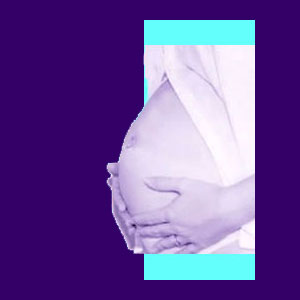
Pregnancy back pain is very common for women to experience prior to giving birth. Some lower back pain is normal during pregnancy, especially in the third trimester. Serious chronic back ache is not normal and the woman should seek out treatment to prevent the symptoms from possibly continuing after the birth. More than 70% of all pregnant women will suffer some form of dorsalgia before having their child and slightly less suffer postpartum pain, as well.
Pregnancy is a very demanding time on a woman’s body and mind. She is stressed physically and emotionally, with extenuating circumstances surrounding her at all times. Simply living normally is difficult for many pregnant women. The better a women embraces and adjusts to the pregnancy, the lower her chances for suffering both complications and serious pain. This is statistically proven and goes a long way to help establish the mindbody connection. Women who report feeling uneasy, unsure or conflicted about carrying a baby to term demonstrate a much higher rate for pregnancy complications, illness, lower baby weight, birth complications and of course, pregnancy-related back pain.
This resource section provides helpful guidance on coping with the temporary back ache which is commonly associated with carrying a baby. If you are suffering from significant pregnancy back pain, then you have come to the right place to get help.
Pregnancy Back Pain Circumstances
Many women have chronic back pain before they get pregnant. Remember dorsopathy is an epidemic condition in the modern medical system. Pregnant women are certainly not immune. If a woman has a back ache condition prior to becoming pregnant, then the pregnancy will often make the pre-existing pain even worse.
In the instance of large breast-related back pain, the condition might be temporary, due to increased breast size from milk. If the condition continues after nursing, treatment might be necessary. Breast lift and reduction are more common in women who have had children. In some cases, these drastic surgical modalities may help to permanently relieve neck, back and shoulder pain syndromes related to heavy mammary organs.
Back Pain During Pregnancy Topics
Pregnancy is such an important time for women to maintain the physical, cognitive and emotional aspects of health. Back pain can become a greatly unwanted complication to an already challenging time in life. These reports can help pregnant women to better manage symptoms of dorsalgia:
Postpartum back pain might continue symptoms after the birth of the baby or even allow them to commence in women who did not endure dorsopathy while pregnant. Meanwhile, new baby back pain can exist in the new mother or father, due to many factors.
Back pain in women might express itself during pregnancy, but not necessarily as a direct result of being with child.
Back pain during pregnancy affects most expectant women to some degree and a few women to significant degrees.
Pregnancy lower back pain is by far the most common variety, but pregnancy-related pain can also exist in the buttocks, pelvis, upper back or neck in less common situations.
Large breast back pain can occur during or after pregnancy and may become a chronic concern even once the birth cycle has long passed.
Common Back Pain During Pregnancy
Most woman suffer from mild to moderate lower lumbar symptoms during pregnancy. This is a classic example of lower back muscle pain in most cases, since the anatomy is completely asymmetrical and heavily burdened to the frontal side by the mass of the baby. The muscles will hurt from activity and sometimes even to the touch. The pain is often localized in the lower back, but can radiate into the buttocks and upper legs. Many women report the worst pain deep inside the buttocks or pelvic region.
Besides pain, muscles may feel stiff, tight and resistant to movement. Pregnancy-related sciatica is also a very common concern, with many women suffering the typical numbness, weakness and tingling in their legs or feet.
It is also possible for hormonal changes to cause some minor pregnancy back pain. This can be very similar to the symptoms experienced during a monthly period for some women.
If a significant structural issue exists in the lumbar or lumbosacral spinal regions, care must be taken not to overly exacerbate the condition. Regardless of whether this may be a particularly bad herniated disc, scoliosis, spondylolisthesis or other condition, it is always best to discuss the effects of a pregnancy with your doctor in advance of actually deciding to have a child. If this is not an option, then at least consult with your doctor to discover what can be done to minimize the effects of the pregnancy on the pre-existing structural problem.
Thoughts on Pregnancy Back Pain
Remember that pain related to pregnancy should not last long after the birth. The baby will be born and you will be twice blessed. First off, you will have that beautiful child to love and adore. Second, the pregnancy back pain will leave and you can get back to life without the added burden of dorsalgia. If you have back symptoms postpartum, try some of the recommended treatment options offered by your physician.
If the pain continues, always try and ascertain the actual causative process involved in the perpetuation. Women can suffer coccyx injuries during the delivery which are known to take a very long time to resolve. This is rarely discussed prior to giving birth, so ladies with tailbone pain should investigate this potential source if they have the telltale signs of a coccyx condition.
Emotionally-generated pain syndromes are also incredibly common to new mothers. There can be much turmoil with a new baby in the home. The moral, ethical and practical considerations of being a parent, who is actually completely responsible for another human life, can be overwhelming. This can be a crushing stress load for any woman to bear.
It is no wonder that TMS is such an often diagnosed disorder in new moms. In these cases, knowledge therapy might be worth a look, since it will help new parents to get to the bottom of the psychological issues which may be causative or contributory to their ongoing pain.





